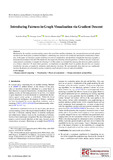Adobe PDF
(1.18 MB)
Introducing Fairness in Graph Visualization via Gradient Descent
Page view(s)
171
checked on Feb 4, 2025
Download(s)
52
checked on Feb 4, 2025



